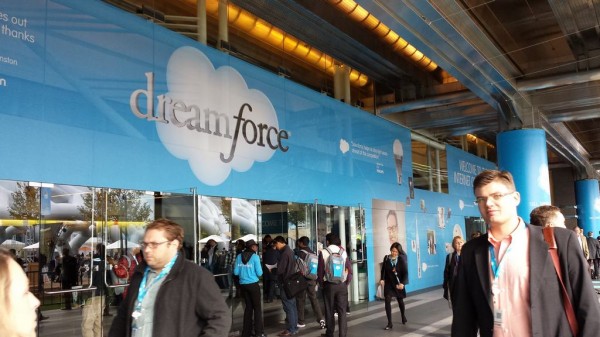
Business owners will be able to update and even create their own mobile apps without calling their IT vendor, should they be using cloud-based enterprise services from Salesforce in future.
That’s the promise, anyway, from the customer relationship management (CRM) vendor looking once again to position itself as the go-to hub to build and distribute apps for enterprises and governments.
At its annual Dreamforce event this week, it is revealing Salesforce 1, a development “platform” which promises 10 times more API (application programming interfaces) or ready-made toolkits that let users and developers easily come up with their own apps.
Salesforce 1 is also a mobile app that will bring together its previous apps. It enables administrators to easily access and control the various features such as enterprise chat and social media interactions on their smartphones and tablets.
As a company that made its name with cloud-based customer service apps, Salesforce has recently roped in third-party cloud-based services, such as Box and Dropbox, as partners. These companies create consumer-friendly apps that business users would like to be extended to the enterprise as well.
If a customer wanted those apps, said Quinton Wall, Salesforce’s director of technology platform, Salesforce has to make them easy to connect to – even though third-party offerings, such as Dropbox, may provide some of the same features as Salesforce’s own apps such as Salesforce Files.
“Box and Dropbox can extend Salesforce 1 if people want them,” he told Techgoondu, in an interview at Dreamforce 2013. “The cloud is a big place and it’s important to create something that customers want,” he said.
He cited ease of use as a reason for developers and enterprises to go with Salesforce’s ready-made tools, instead of creating the software and services themselves.
For example, the Academy of Art University in San Francisco, which is not a big user of Salesforce CRM offerings, taps on Salesforce to push out class and bus schedules via mobile apps used by students.
Another user, a truck company in the United States, has managed to build an app for its delivery drivers to add a new order on the spot, if a customer decides to add an order after receiving the items. This was built by the business owner, said Wall, using a new feature called QuickAction, which is among the new APIs to be pushed out with Salesforce1.
This ease of use empowers business users, even those who only know how to run Excel on a PC and have no professional software development experience, he pointed out.
He also stressed that Salesforce 1 is not just a repackaging of previous Salesforce efforts. Included in the new APIs will be tools for experienced developers looking to connect up the Internet of things, he added.
At the end of the day, it is separating the raw data from the useful information from millions of sensors that are going to be connected in the years ahead.
These include sensors on trucks that help detect when they might need servicing before a major breakdown occurs. Or even light bulbs that are smart enough to send back information to inform that they need to be changed after many hours of use.
Is a light bulb really a customer, as Salesforce may be implying in its show materials here?
That’s not silly at all, said Wall. “Who’s waiting at the other end of a light bulb? A customer. If a bulb goes off, they’re going to go on Instagram or Facebook to complain about it.”
We’ll have more from the Dreamforce show this year at San Francisco in the coming days.






